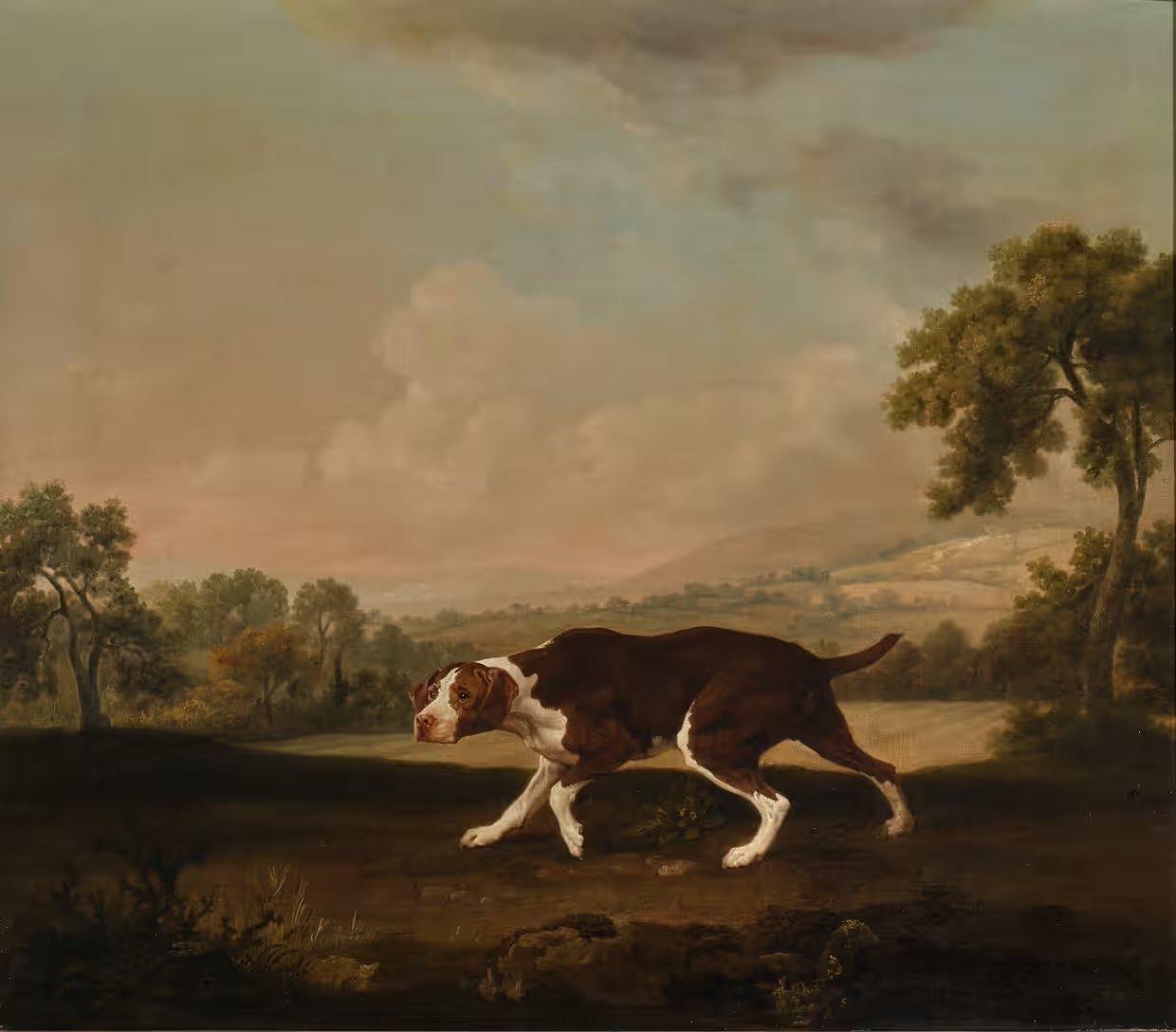
A dog portrait by George Stubbs (1724–1806) that sold for £11 at auction back in 1802 could fetch as much as £2 million ($2.5 million) when it hits the block at Sotheby’s London next month. The work, titled The Spanish Pointer, is believed to be the first canine painting by Stubbs, dating from between 1766 and 1768, and marks a turning point in the social appreciation of dogs.
The artist, who is best known for his paintings of horses, was not particularly prolific, completing just 400 or so works before his death at age 81. The Spanish Pointer is one of Stubbs’s most well-known paintings. The painting currently for sale is something of a rediscovery, having only been shown in an institutional exhibition once, at London’s National Gallery of Sports and Pastimes in 1948. (The short-lived institution featured the collection of founder Walter Hutchinson, then the owner of The Spanish Pointer.)
“The dog has long been man’s best friend, but the eighteenth century saw a significant rise in its importance and status,” Julian Gascoigne, a senior director and British paintings specialist at Sotheby’s said. He added that, with a few exceptions, the appearance of dogs in art had previously been as “staffage,” or secondary figures, within wider compositions of mythological and hunting scenes, landscapes, or as part of a family conversation pieces.
“It’s not a coincidence that paintings of dogs, as works of art in themselves, really begins in earnest with Stubbs,” Gascoigne said. “In broader society, a growing tenderness for these most loyal of domestic animals, and their innate association with a bucolic way of life, fed a popular demand for such imagery.”
William Woollett, after George Stubbs, The Spanish Pointer. Image courtesy of Bonhams.
The last time the work was seen publicly was at Sotheby’s London in 1972, when it sold for £30,000 ($75,000). Over 50 years later—after making its way to a private collection in Philadelphia—it could make quite the splash at the house’s “Old Master and 19th-Century Paintings Evening Sale” on December 4.
The original owner of the dog portrait was the publisher Thomas Bradford, who turned it into a famous print, engraved by William Woollett (1735–1785). The image went on to appear on Spode porcelain and sporting guns, in addition to the numerous editions of the print. It was also widely copied, including by Stubbs himself, who made another version—possibly the original—now in the collection of the Neue Pinakothek, Munich. Other artists such as Philip Reinagle (1749–1833) and Richard Cosway (1742–1821) borrowed the dog’s pose for their own works, as did Stubbs, who used it as the basis for Portrait of Lord Clermont’s pointer, Phillis (1772).
The Spanish Pointer is also interesting because it depicts the now extinct predecessor to the smaller English Pointer breed that we know today, which was developed in the 19th century. At the time that Stubbs painted the canvas, dogs and dog breeding were becoming more common in Britain thanks to the growing popularity of shooting among the aristocracy.
After its original owner died in 1773, The Spanish Pointer was purchased by a print seller and publisher named Robert Sayer and passed on to his son. But when Christie’s held an auction at the Sayer home of the estate’s contents in 1802, the dog portrait sold for a pittance—just £11, or £1,340 ($1,690) today, adjusting for historical inflation.
George Stubbs, Mares and Foals in an extensive landscape (1769). The painting did not sell when it came up at auction at Christie’s London in July 2024. Image courtesy of Christie’s London.
The last time a major Stubbs work came up at auction, it failed to find a buyer. In July, Mares and Foals in an extensive landscape, hailed by Christie’s London as “the most spectacular of George Stubbs’ celebrated mares and foals paintings,” was bought in despite a presale estimate of £7 million to £10 million ($8.98 million to $12.84 million)
According to the Artnet Price Database, the artist’s auction record has stood at £22.4 million ($36 million) since 2011, with the sale of Gimcrack on Newmarket Heath, with a trainer, jockey and stable lad at Christie’s London. Stubbs has cracked the $1 million price point at auction 19 times, but only once in the last 10 years, with a £3 million ($4 million) panel painting in 2016.
Ahead of the upcoming auction, The Spanish Pointer and other works being offered in the sale will be on view at Sotheby’s west London headquarters from November 29 to December 4.